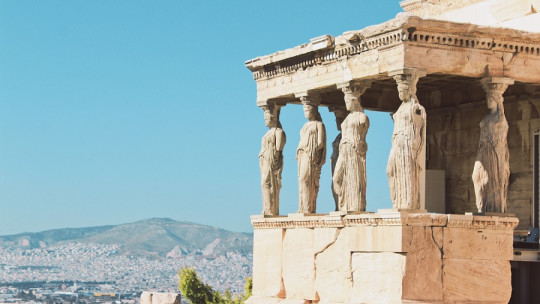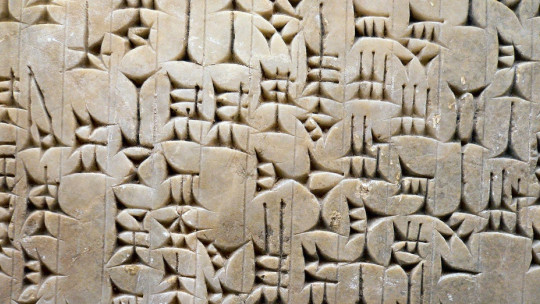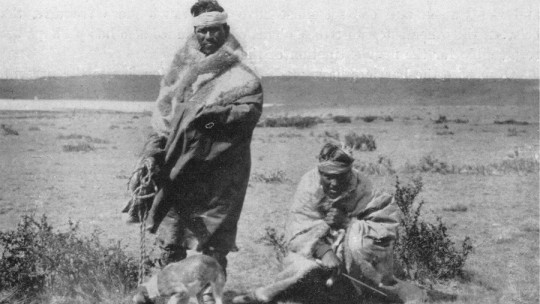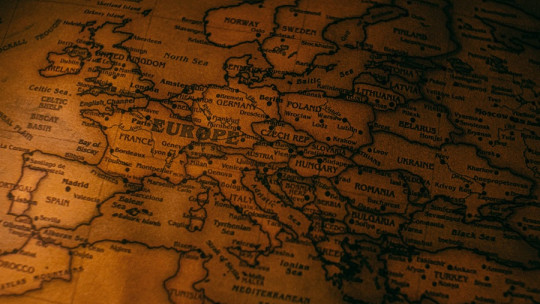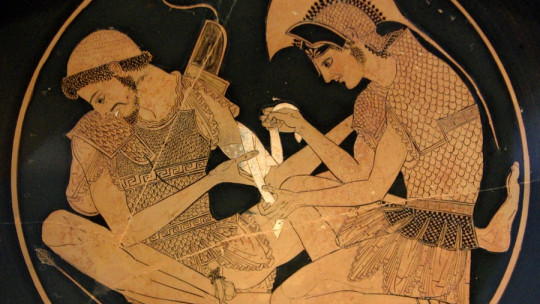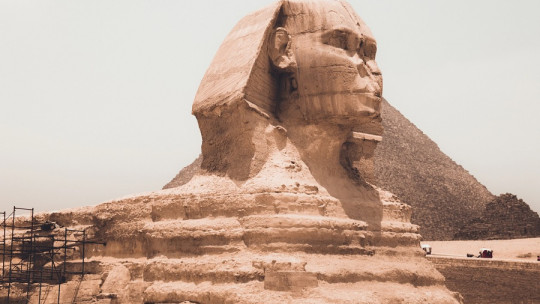What are the 4 Greek tribes? In reality, and if we speak strictly, we should talk about many more. In the ethnic cultural melting pot that formed the culture of Ancient Greece we find groups of diverse origins. However, it is true that The Hellenic tribes that brought together the largest number of human groups were four: the Ionians, the Aeolians, the Achaeans and the Dorians
Before focusing on the characteristics of each specific tribe, it is necessary to review the concepts that we are going to talk about in this article, as well as the historical process that gave rise to the Greek tribes. Only in this way can we understand what a tribe was in Hellenic culture, and what role it played in their society.
Tribes, phratries and genos in Ancient Greece
A tribe, within the Greek cultural and social context, was a group of phratries And what was a phratry? The word comes from Greek φρατήρthat is, “brother”, and refers to a grouping of several clans or genos. Finally, the genos They are groups with family relationships, that is, groupings of families. These distinctions drew a pyramid that opened as more individuals came into play: the basic nucleus was the family; several family groups with common ties, it was a genos; several genosa phratry and, finally, a group of phratries It is what gave rise to the tribe.
As we can see, while families and genos were united by family ties, the case of the phratries and the tribes was more complex. They could have blood ties or simply be alliances between clans
At first, each of these realities was independent of the others, and each one resolved its own issues. But as history progressed, economic changes and the rise of trade and crafts, among other things, led to large human movements from one tribe to another. In this way, matters that were previously considered, say, private, now they concerned everyone. It is in this context where we must place the system of Athenian popular law, which was placed above the uses and customs of the various tribes.
The origin of the 4 Greek tribes: the Indo-European invasions
So far we have clarified the meaning of the concepts we discuss. However, what is the origin of this division into tribes? The answer is found in the Indo-European invasions.
The Indo-Europeans were a cultural and ethnic group of disputed origin that began to spread throughout Europe and part of Asia around the 5th millennium BC Thus, what later became the main Greek tribes came from this ethnic group. Let’s see why.
The pre-Hellenic peoples
Prior to the Indo-European invasions, what we know today as Greece (mainland and its islands) were populated by flourishing cultures. Between them, the most notable was the Minoan culture which was located on the island of Crete, and which authors such as Carlos Moreu identify with the pre-Hellenic tribe of the Léleges.
Similarly, In the north of Greece we find, around the 4th millennium BC, the tribe of the Pelasgians , which Carlos Moreu identifies with the so-called Dímini culture. Both cultures present sufficient characteristics to not be considered Indo-European; Following Moreu once again, inscriptions in the Pelasgian language and tablets written in the Cretan language demonstrate that these tribes did not speak Indo-European languages.
The arrival of the “Hellenes”
Thus, we find that, prior to the Indo-European invasions, cultures of various kinds flourished in mainland Greece and its islands. But Towards the 4th millennium BC, Indo-European groups began to move, probably from the Caucasus area And that is when an Indo-European immigration to Greece begins, a constant and uninterrupted flow that lasts no less than 5 centuries. Finally, the newcomers manage to dominate Greece around the second millennium BC.
The word “Hellene”, which we currently associate without much problem with the Greeks, is actually a word of more than likely Indo-European origin. How could it be otherwise, if the historical Greek tribes come from the migrations of this ethnic group? According to Carlos Moreu in his magnificent article The Hellenic tribesthe word “Hellene” would come to mean something like “brilliant” or “illustrious”, since it would take the Indo-European root hel-which by the way we also find in “Helios”, the sun god.
In conclusion, we can say that, if the Greeks called themselves “Hellenes”, and their land, “Hellas”, it is because their tribes came from this invading people, who not only left them their language (Greek is a of the languages that derive from Indo-European) but also many features of its culture.
The “Dark Ages”
Paradoxically, The arrival of the “bright ones” brought with it the beginning of what historians have called the Dark Ages And, coinciding with the invasions of the Indo-European peoples, especially that of the Dorians, Greece plunged into a period of which there is no written record, so it is impossible to reconstruct what happened in that long historical episode of more than 3 centuries. .
This “Dark Age” coincides with the settlement of the Indo-European peoples in Greek territory, but it does not mean that this “setback” was due to these invasions. There are many hypotheses that try to explain what happened to cause civilizations as refined as the Cretan to become extinct; But, since we lack written testimonies, we can only make assumptions.

The 4 Greek tribes: Ionians, Aeolians, Achaeans and Dorians
Now that we have laid the foundations for the origin of the 4 most important Greek tribes, let’s move on to describe each of them.
1. The Ionians
This tribe was mostly settled in the area of Ionia, in Asia Minor It is especially known for having seen the birth of the pre-Socratics, whose “leader”, Thales of Miletus, was an Ionian. However, despite being abundant in this area, we also find Ionian testimony in Attica and the Peloponnese.
The Ionian tribe claimed that he was descended from the Greek hero Ion This is something common in all archaic groups: attributing a mythical origin, connected to heroes or gods. As we will see later, all tribes had that mythical past very present.
The Ionians formed the so-called Ionian League , which was made up of the cities of Ephesus, Samos, Prienum, Colophon, Clazomene, Chios, Miletus, Theos, Myontus, Lebedos, Phocaea and Erythras. In the 6th century they were conquered by the Persians; It was precisely the uprising of the Ionians that caused the Persian Wars against the Persian Empire.
2. The Aeolians
Traditionally, the Aeolians They considered themselves descendants of Aeolus, king of Aeolis and god of the winds The Aeolis was, certainly, the place of settlement of the tribe, which included western Asia Minor and some of its islands, such as Lesbos. Like the rest of the tribes, the Aeolians used a Greek dialect, Aeolian, which was used, among others, by the famous poetess Sappho.
Carlos Moreu ventures in his already cited article The Hellenic tribes that the etymology of this tribe may come from Ea or Aia, a place in Colchis, an area very close to the Caucasus and which would have been the original area of the Indo-Europeans who emigrated to Greece. Thus, the Aeolians could be the first tribe to penetrate Hellenic soil.
3. The Achaeans
They are probably the best-known Greek tribe along with the Ionians, with whom they seem to be ethnically related. The myth makes the Achaeans descendants of Achaeus, who was also Ion’s brother. The Achaeans were located in southern Thessaly, central Greece and the Peloponnese and during the Bronze Age they had cities as flourishing as Tiryns, Thebes or Mycenae.
Mycenae is, perhaps, the best known, for being the homeland of Agamemnon, the mythical king of the Achaeans during the Trojan War. Archaeological records attest to a rich and prosperous city, which exercised important dominion during the time immediately before the Dark Ages.
Some historians accept the explanation of the Dorian invasions, another of the Indo-European peoples, as the beginning of the end of the Mycenaean civilization. Because we should not think that the Indo-European movements only collapsed pre-Hellenic culture; Let us remember that the Indo-Europeans arrived in successive waves, which allows us to assume that, when the last groups arrived, others were already satisfactorily established in Greece, as seems to be the case of the Achaeans.
In the next point we will deal with the last of the Greek tribes: the Dorians.
4. The Dorians
The Dorians entered Greek soil at the end of the 2nd millennium BC, and around 1140 BC , and according to some theories, they destroyed Mycenae. Initially installed in northern Greece, they later moved to central Greece.
Carlos Moreu has given the Greek term as the etymological origin of the word “Dorian”. dory, that is, “tip of the spear”. If so, we would effectively be facing an eminently warrior people On the other hand, Julius Pokorny maintains, in the Indo-European etymological dictionarythe theory that the term “Dorian” comes from doris, that is, “forest”, “highland”. In this case, the word would perhaps be related to the habitat of the Dorians, who may have lived in forested mountains.

